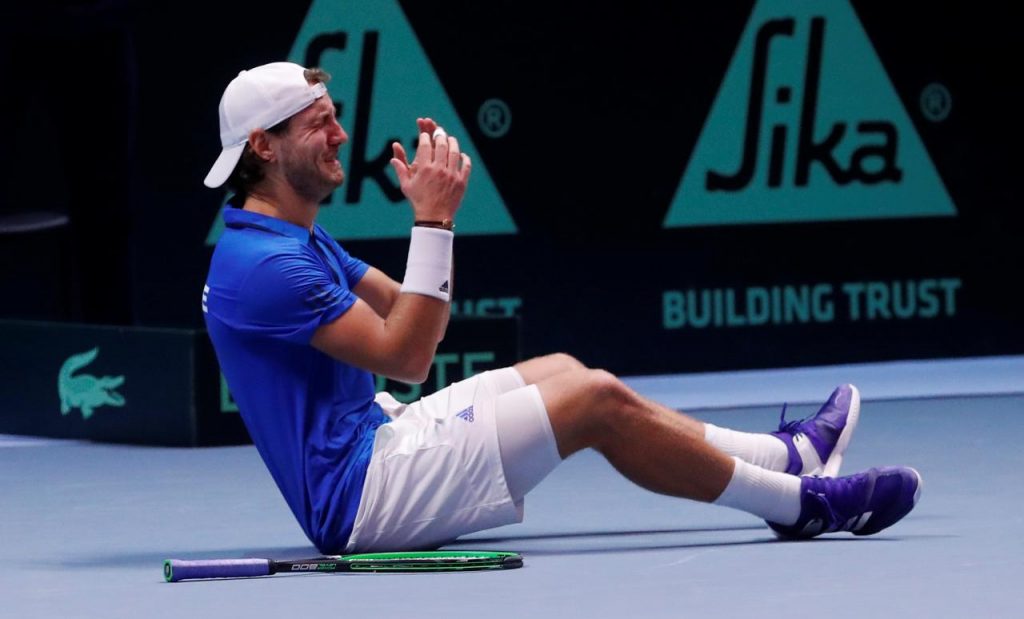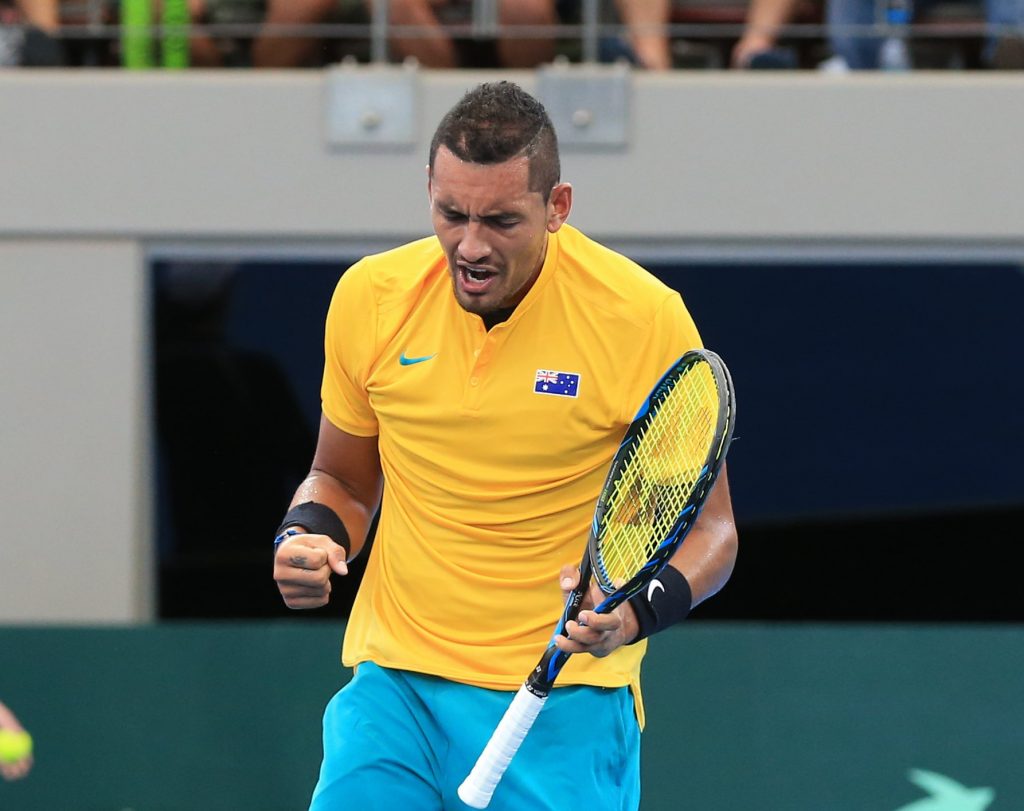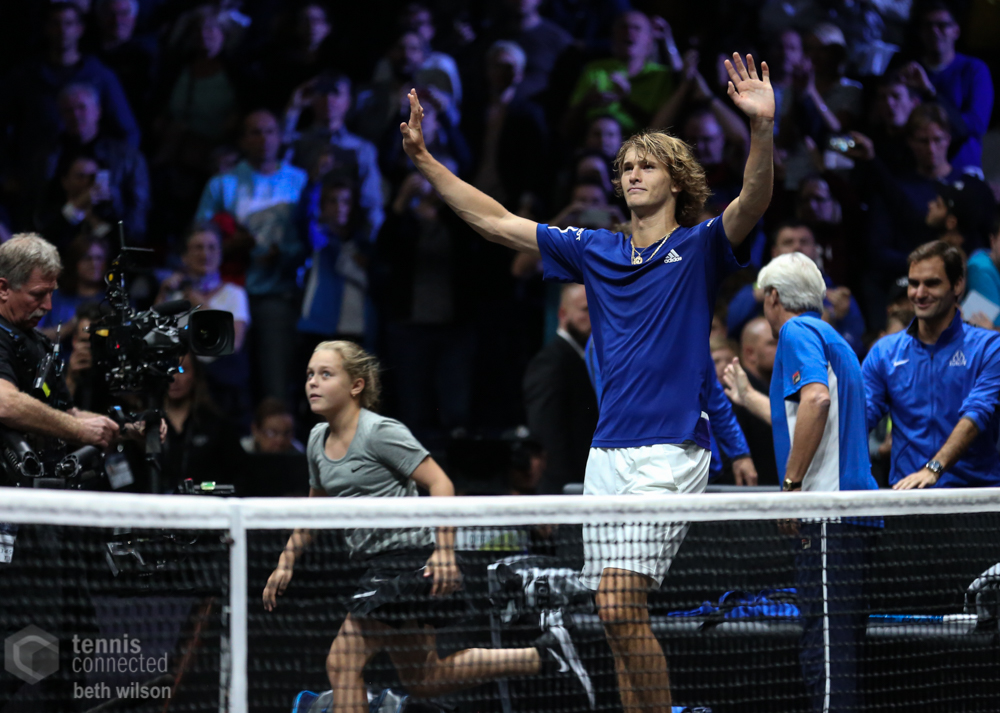To say that opinions have varied over the ITF’s latest proposal to revamp—or destroy, depending on your point of view—Davis Cup would be a gross understatement.
One camp of players has looked on the changes as nothing less than a betrayal.
It “could be the most stupid decision in world sport history,” Jan Kodes told journalist Randy Walker.
“A death sentence,” said Lucas Pouille, the man who clinched the Cup for France last November.
The ITF has “blood on its hands,” according to an article retweeted by Lleyton Hewitt.
To another camp of players, though, those same changes have been looked on as the long-awaited salvation for the 118-year-old competition.
“Necessary and inevitable,” former U.S. No. 1 Andy Roddick said.
“It’s a good initiative that can work,” Rafael Nadal told the Spanish paper Marca.
“This is fantastic news!” Novak Djokovic exulted to Le Parisien.
The one thing everyone agrees on is that, in a sport not known for daring initiatives, the ITF has made the boldest move imaginable. Instead of four rounds played over 10 months, at home-and-away locations around the world, the Davis Cup—if we can still call it that—will be transformed into an 18-team tournament held over the course of one turbo-week, at one location, at the end of the season. Ties will be best-of-three rubbers, instead of best-of-five; matches will be best-of-three sets, instead of best-of-five. Call it Davis Cup for the attention-deficit-disorder age.
The event is the brainchild of soccer star Gerard Piqué and Japanese investor Hiroshi Mikitani, and it’s being billed as the World Cup of Tennis. The concept has been kicking around the men’s tour for nearly a decade, and has long had Djokovic’s backing. The prospect of the ATP signing a similar deal and starting its own team competition was one of the motivating factors for the ITF to take preemptive action, and take the plunge with Piqué.
The upsides are obvious. The contract with Piqué’s company, Kosmos, will be worth $3 billion over 25 years; this is money that, hopefully, can be spent on the ITF’s real mission, growing the sport at the grassroots level. Just as important, the players who have long complained about the onerous and unpredictable nature of Davis Cup’s archaic, stop-and-start schedule will, at least theoretically be more willing to commit to a single week in a single place. That’s good news for the sport’s stars, sponsors, and broadcast partners.

Is it also good news for tennis’s fans? With a one-week format, there will be no Davis Cup to watch or follow until November. It will be more difficult to travel to a tie when it’s held somewhere outside your own country; if the event is staged in Asia, which is the assumption at the moment, it will be especially hard for spectators in the U.S. and Europe to attend, or watch on TV.
For many of us, though, the most significant and ominous element in the Piqué plan is the end of home-and-away World Group ties. The atmosphere over these weekends is what separates Davis Cup from normal tour events. Raucous rooting is mandatory, and the noise and energy that comes with it lets you know that the players are competing for something bigger than themselves. Four times a year, Davis Cup allows tennis lovers to shrug off their customary formality and root with the partisan abandon of team-sports fans.
The ITF believes it has no choice; it’s either make this change or watch as Davis Cup withers and dies. As the New York Times put it, “ITF Proposes a Huge Makeover for a Stale Davis Cup.” But to listen to most mainstream sports media, especially in the U.S., tennis itself has been dying ever since Bjorn Borg drove out of Flushing Meadows and into the sunset in 1981. Do those of us who follow the game today—in the age of Roger and Rafa, Serena and Maria—believe the sport is in terminal decline?
We’ve been told for decades that Davis Cup needs to change because the game’s stars don’t play it. That’s not exactly true. Of the 26 men who have been ranked No. 1 during the Open era, 23 have been part of at least one Cup-winning campaign; that includes all four of the Big 4.
It is true that the stars don’t always play it. The trend over the last 30 years has been for the game’s big names to do whatever they can to lead to their countries to a title, and then go into Davis Cup semi-retirement. Personally, I don’t have a problem with that. I can watch the Big 4 at dozens of other tournaments all year; one of the underrated appeals of Davis Cup is the chance to see lesser-known and lower-ranked players take a turn on the big stage, and play the hero for a day. In an era when four men have monopolized the rankings and the major finals, Davis Cup has helped spread the glory around.

If the competition is dying, or if it doesn’t mean what it once did, that fact doesn’t seem to have occurred to today’s players. Over the last four years, Top 10 regulars like Juan Martin Del Potro, Tomas Berdych, Jo-Wilfried Tsonga, Marin Cilic, and David Goffin have led their teams to the finals. The best players in the U.S.—Jack Sock, John Isner, Sam Querrey, and Steve Johnson—are fully committed. And the ATP’s Next Gen is just as interested in bringing a Cup back home: The highlight of the World Group’s opening round in 2018 was a showdown between Alexander Zverev of Germany and Nick Kyrgios of Australia. The tradition of putting a Davis Cup title on your Hall of Fame CV shows no signs of ending.
The imminent death of Davis Cup doesn’t seem to have registered with fans or sponsors, either. As journalist Ana Mitric points out, more than 500,000 spectators attended Davis Cup last year, and more than 26,000 came to see the final in Lille, France; that was down slightly from the record 27,400 who filled the same arena for the final three years ago—that’s more people than Arthur Ashe Stadium holds. The Cup’s title sponsor, BNP Paribas, recently re-upped its contract through 2021, and the competition is televised by more than 50 broadcasters worldwide.
That doesn’t mean Davis Cup can’t be improved, or changed, or that it shouldn’t try to make more money and draw bigger stars; even if you disagree with the results, you can’t say the ITF isn’t thinking big under Dave Haggerty’s leadership. As Nadal says, the one-week World Cup of Tennis is an “initiative that can work”—emphasis on “can.” To establish its viability, Piqué and the ITF will need the Big 4 to buy in, and to be healthy and willing to play even deeper into November than they already do. Only one of them, Federer, was still upright at the end of 2017, and he’ll be 38 by the time this event kicks off. More important, and more difficult to make happen, organizers will need to reproduce at least some of the partisan Davis Cup atmosphere at a neutral site. I think that would be more likely to happen at a European location than one in Asia. If the Cup ends up feeling like another tour event, the baby will have been thrown out with the bathwater.
Yet if there had never been a Davis Cup, the ITF’s single-week proposal would seem like a no-brainer. What could be better than finishing the year with a star-studded battle of nations? And I hope, if the plan is ratified, that I’m proven wrong and it becomes a popular, money-making addition to the calendar. The ITF rightly points to its decision 50 years ago to open the game to professionals as an example of how progressive thinking can triumph over traditionalist skepticism in tennis. But the last time the organization created a season-ending event, it produced the ill-fated Grand Slam Cup, which lasted from 1990 to 1999. Is it worth risking a similar fate for Davis Cup?
In calling their proposal the World Cup of Tennis, the organizers are trying to make tennis sound more like soccer. That idea, that tennis needs to be more like other sports to succeed, is a common one. But the fact is that tennis isn’t like other sports. And Davis Cup isn’t like the World Cup. As a longtime tennis fan, I’ve come to like many of the aspects of Davis Cup that are routinely criticized. I like having four rounds spread out across the year; each one feels like a welcome break from the routine of the tours, and a welcome injection of fan energy. I like that three of those rounds are played right after a major ends; a weekend of Davis Cup cushions the withdraw symptoms that come with the close of each Grand Slam. I like the slow-building drama of best-of-five-set matches; I like that doubles has a day to itself, and that it counts equally; I like the archaic terminology—ties, rubbers, dead rubbers—that has somehow survived a century’s worth of change.
If, despite the reports of its death, Davis Cup can continue to survive the way it has for the last 10, 20, 30 years, I’m more than happy to live with it as is. I don’t think I’m the only one.

















